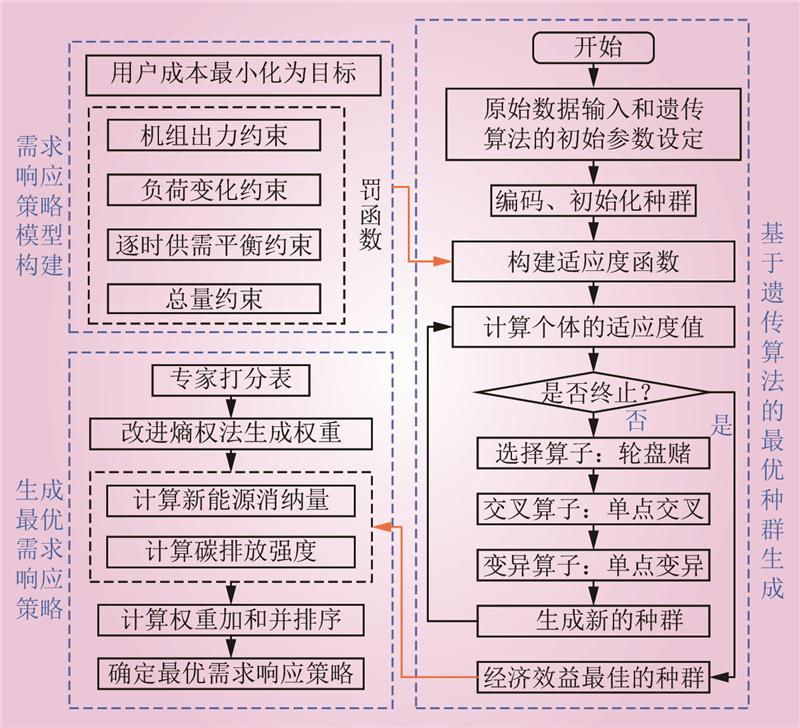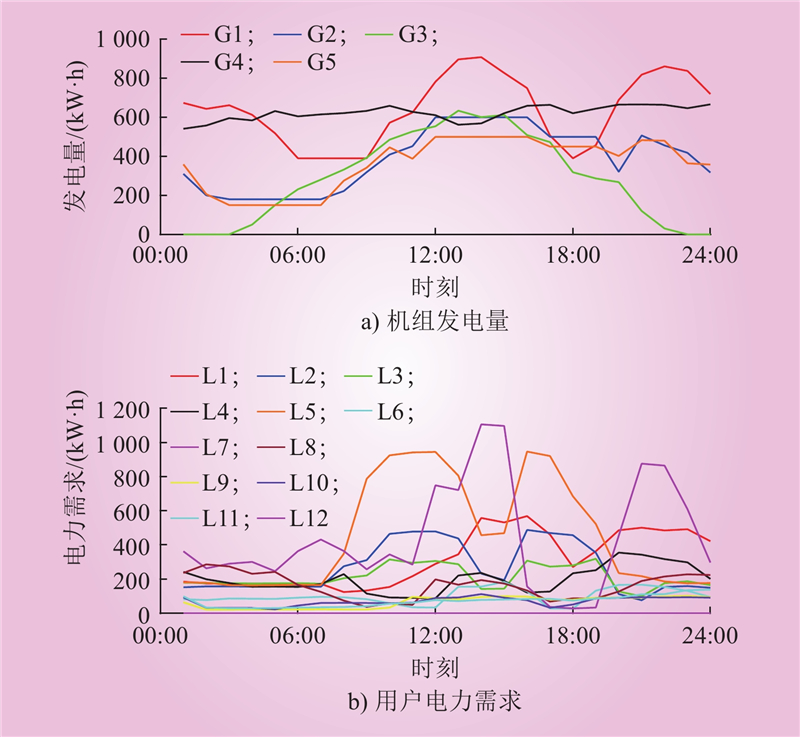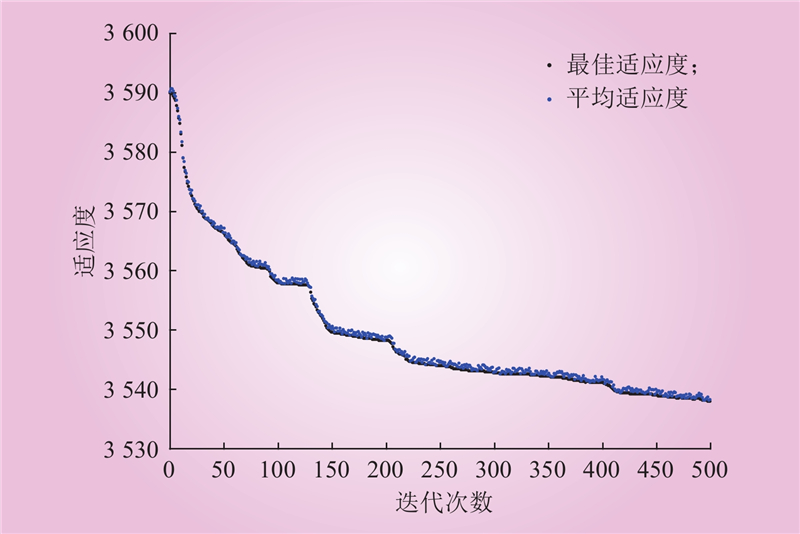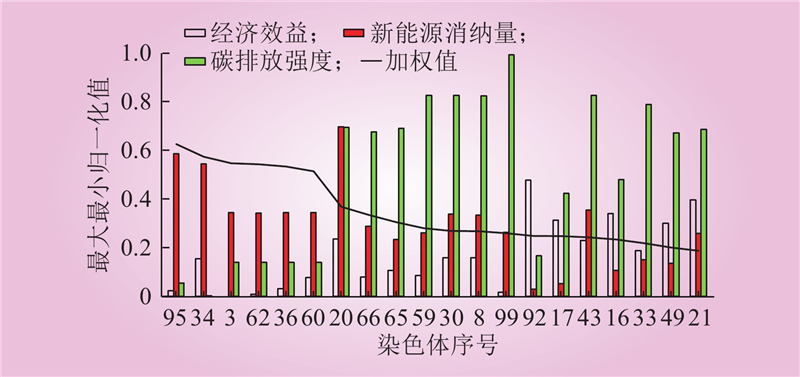| 1 |
鞠立伟, 吕硕硕, 李鹏. 新型电力系统需求侧灵活性资源时空协同优化与动态均衡机制研究综述[J]. 电力建设, 2024, 45 (9): 142- 163.
DOI
|
|
JU Liwei, LV Shuoshuo, LI Peng. Review of novel demand-side flexibility resource spatio-temporal co-optimization and dynamic equilibrium mechanism of power systems[J]. Electric Power Construction, 2024, 45 (9): 142- 163.
DOI
|
| 2 |
叶小宁, 王彩霞, 李琼慧, 等. 国外新能源高占比电力系统电力供应保障措施及启示[J]. 中国电力, 2024, 57 (4): 61- 67.
|
|
YE Xiaoning, WANG Caixia, LI Qionghui, et al. Power supply ensuring measures and implications of foreign countries' power systems with high proportion of new energy[J]. Electric Power, 2024, 57 (4): 61- 67.
|
| 3 |
苏志鹏, 王莉, 梁欣怡, 等. 考虑阶梯式碳交易及综合需求响应的虚拟电厂优化调度[J]. 中国电力, 2023, 56 (12): 174- 182.
|
|
SU Zhipeng, WANG Li, LIANG Xinyi, et al. Optimal dispatch of virtual power plant considering stepped carbon trading and comprehensive demand response[J]. Electric Power, 2023, 56 (12): 174- 182.
|
| 4 |
徐峰亮, 王克谦, 王文豪, 等. 计及激励型需求响应的低压配电网混合储能优化配置[J]. 中国电力, 2024, 57 (6): 90- 101.
|
|
XU Fengliang, WANG Keqian, WANG Wenhao, et al. Optimal allocation of hybrid energy storage in low-voltage distribution networks with incentive-based demand response[J]. Electric Power, 2024, 57 (6): 90- 101.
|
| 5 |
蒋棹骏, 向月, 谈竹奎, 等. 计及需求响应的高比例清洁能源园区储能容量优化配置[J]. 中国电力, 2023, 56 (12): 147- 155, 163.
|
|
JIANG Zhaojun, XIANG Yue, TAN Zhukui, et al. Optimal allocation of energy storage capacity in high proportion clean energy parks considering demand response[J]. Electric Power, 2023, 56 (12): 147- 155, 163.
|
| 6 |
尚文强, 李广磊, 丁月明, 等. 考虑源荷不确定性和新能源消纳的综合能源系统协同调度方法[J]. 电网技术, 2024, 48 (2): 517- 532.
|
|
SHANG Wenqiang, LI Guanglei, DING Yueming, et al. Collaborative scheduling for integrated energy system considering uncertainty of source load and absorption of new energy[J]. Power System Technology, 2024, 48 (2): 517- 532.
|
| 7 |
何晓洋, 刘淼, 李健, 等. 基于需求侧响应的区域综合能源系统的低碳经济调度[J]. 高电压技术, 2023, 49 (3): 1140- 1149.
|
|
HE Xiaoyang, LIU Miao, Li Jian, et al. Low-carbon economic dispatch of regional integrated energy system based on demand side response[J]. High Voltage Engineering, 2023, 49 (3): 1140- 1149.
|
| 8 |
朱伟业, 罗毅, 胡博, 等. 热负荷弹性与分时电价需求侧响应协同促进碳减排的电热优化调度[J]. 电网技术, 2021, 45 (10): 3803- 3813.
|
|
ZHU Weiye, LUO Yi, HU Bo, et al. Optimized combined heat and power dispatch considering decreasing carbon emission by coordination of heat load elasticity and time-of-use demand response[J]. Power System Technology, 2021, 45 (10): 3803- 3813.
|
| 9 |
李姚旺, 张宁, 杜尔顺, 等. 基于碳排放流的电力系统低碳需求响应机制研究及效益分析[J]. 中国电机工程学报, 2022, 42 (8): 2830- 2842.
|
|
LI Yaowang, ZHANG Ning, DU Ershun, et al. Mechanism study and benefit analysis on power system low carbon demand response based on carbon emission flow[J]. Proceedings of the CSEE, 2022, 42 (8): 2830- 2842.
|
| 10 |
MONIR S A, ABOLFAZL M, WEBBER L, et al. Robust optimization-based optimal operation of islanded microgrid considering demand response[J]. Sustainability, 2022, 14 (21): 14194.
DOI
|
| 11 |
WILKO H, WIDED M, THOMAS V, et al. Economic assessment of demand response using coupled national and regional optimization models[J]. Energies, 2022, 15 (22): 8577.
DOI
|
| 12 |
戴逢哲, 姜飞, 陈磊, 等. 价格-积分联合激励下考虑消费舒适度的居民需求响应优化策略[J]. 电网技术, 2024, 48 (2): 819- 833.
|
|
DAI Fengzhe, JIANG Fei, CHEN Lei, et al. Optimization strategy of residential demand response considering consumption comfort under price-score joint incentive[J]. Power System Technology, 2024, 48 (2): 819- 833.
|
| 13 |
李志煌, 邵振国, 朱少林, 等. 基于主从博弈推演和改进多任务学习的居民用户需求响应潜力评估[J/OL]. 电网技术, 1–14[2024-08-14].
|
|
LI Zhihuang, SHAO Zhenguo, ZHU Shaolin, et al. Assessing the potential of residential user demand response based on stackelberg game theory and improvements in multi-task learning[J/OL]. Power System Technology, 1–14[2024-08-14].
|
| 14 |
董雷, 倪佳炜, 张师铭, 等. 基于双重博弈的电价套餐设计方法[J]. 电网技术, 2024, 48 (2): 688- 700.
|
|
DONG Lei, NI Jiawei, ZHANG Shiming, et al. Designing of electricity price package method based on dual game[J]. Power System Technology, 2024, 48 (2): 688- 700.
|
| 15 |
AKASH T, PUSHPENDRA S, LAL M. A stackelberg game theory based demand response algorithm for domestic consumers[J]. Electric Power Components and Systems, 2022, 50 (19): 1186- 1199.
|
| 16 |
陈家兴, 王春玲, 刘春明. 基于改进碳排放流理论的电力系统动态低碳调度方法[J]. 中国电力, 2023, 56 (3): 162- 172.
|
|
CHEN Jiaxing, WANG Chunling, LIU Chunming. Dynamic low-carbon dispatching method of power system based on improved carbon emission flow theory[J]. Electric Power, 2023, 56 (3): 162- 172.
|
| 17 |
吴静, 刘轩宇, 李响, 等. 考虑网损的电力系统节点边际碳势理论研究与建模[J/OL]. 中国电力: 1–11[2024-06-22].
|
|
WU Jing, LIU Xuanyu, LI Xiang, et al. Research and modelling of bus marginal carbon intensity for power systems considering network losses[J/OL]. Electric Power, 1–11[2024-06-22].
|
| 18 |
周孟然, 王旭, 邵帅, 等. 考虑需求响应和碳排放额度的微电网分层优化调度[J]. 中国电力, 2022, 55 (10): 45- 53.
|
|
ZHOU Mengran, WANG Xu, SHAO Shuai, et al. Hierarchical optimal scheduling of microgrid considering demand response and carbon emission quota[J]. Electric Power, 2022, 55 (10): 45- 53.
|
| 19 |
李鹏, 杨莘博, 魏澄宙, 等. 计及能源政策的园区综合能源系统鲁棒随机优化模型[J]. 中国电力, 2022, 55 (11): 109- 120.
|
|
LI Peng, YANG Shenbo, WEI Chengzhou, et al. Robust stochastic optimization model of park integrated energy system considering impact of energy policy[J]. Electric Power, 2022, 55 (11): 109- 120.
|
| 20 |
汪惟源, 乔颖, 窦飞, 等. 基于改进遗传算法的海上风电场集电系统拓扑优化[J]. 中国电力, 2019, 52 (1): 63- 68.
|
|
WANG Weiyuan, QIAO Ying, DOU Fei, et al. Optimization of offshore wind farm collector systems based on improved genetic algorithm[J]. Electric Power, 2019, 52 (1): 63- 68.
|
| 21 |
葛成余, 周博曦, 朱颂怡, 等. 基于遗传算法的区域配电网单线图的自动布局算法[J]. 中国电力, 2016, 49 (12): 53- 57.
DOI
|
|
GE Chengyu, ZHOU Boxi, ZHU Songyi, et al. Single line diagram layout and optimization method for regional distribution system based on genetic algorithm[J]. Electric Power, 2016, 49 (12): 53- 57.
DOI
|
| 22 |
王奇, 常安, 宋云海, 等. 基于组合赋权的变权模糊输电设备状态评估方法[J]. 中国电力, 2015, 48 (5): 21- 26.
|
|
WANG Qi, CHANG An, SONG Yunhai, et al. A variable weights transmission equipment condition evaluation method based on combined weight theory[J]. Electric Power, 2015, 48 (5): 21- 26.
|
| 23 |
贾开华, 于云霞, 范秀波, 等. 基于AHP-EWM综合赋权和TOPSIS法的多能互补系统综合评价[J]. 中国电力, 2023, 56 (7): 228- 238.
|
|
JIA Kaihua, YU Yunxia, FAN Xiubo, et al. Multi-criteria comprehensive evaluation of multi-energy complementary system based on AHP-EWM and TOPSIS method[J]. Electric Power, 2023, 56 (7): 228- 238.
|
| 24 |
丁宇辰. 煤制油项目后评价体系的构建与应用研究[D]. 呼和浩特: 内蒙古工业大学, 2015.
|
|
DING Yuchen. Study on construction and application of the evaluation of coal-to-liquids project[D]. Hohhot: Inner Mongolia University of Technology, 2015.
|
| 25 |
许轶. “碳双控”背景下电力系统碳责任优化与需求响应策略研究[D]. 北京: 华北电力大学(北京), 2024.
|
|
XU Yi. Research on carbon responsibility optimization and demand response strategy of power system under the background of "carbon dual control"[D]. Beijing: North China Electric Power University, 2024.
|








